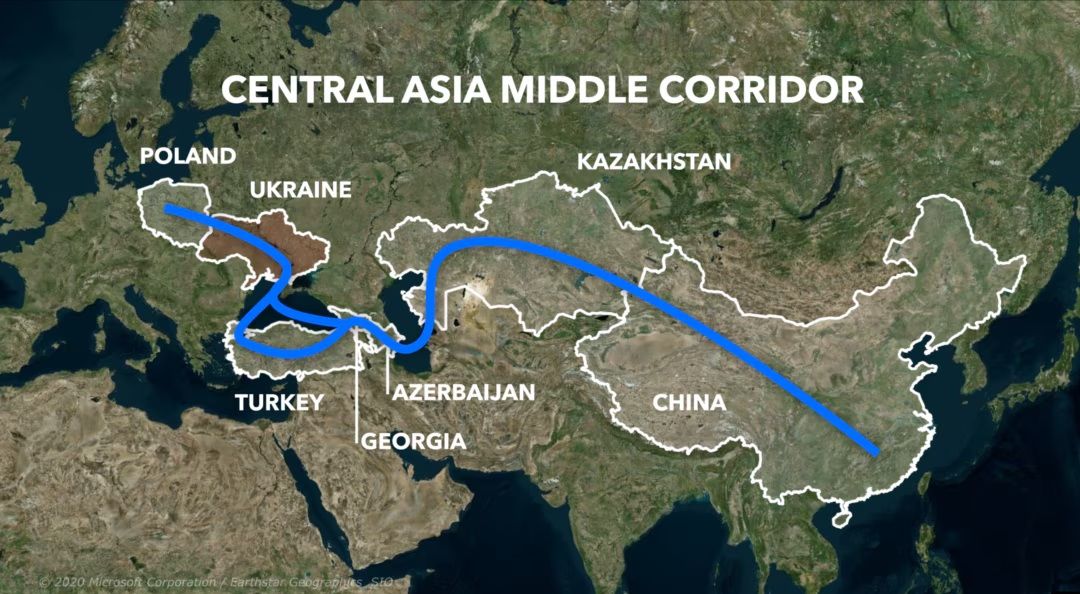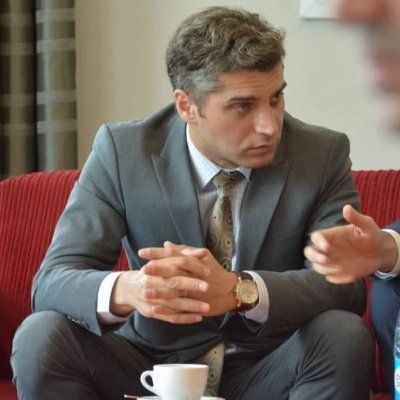Middle Corridor's growing importance for states along its route

Providing safe and reliable access to new markets with an estimated population of over 80 million along the route, the Middle Corridor, also known as the Trans-Caspian International Transport Route, is gaining popularity as a key East-West connection. Looking back almost a decade, the possibility of this huge project coming to fruition did not sound very realistic. However, especially in the last 4 years, the rapidly changing geopolitical situation made all the predictions come true. Obviously, following the Russo-Ukrainian war and subsequent sanctions, demand for opening the project grew more than ever.
Besides, the Middle Corridor offers a route that is at least 2,000 kilometers shorter than the Northern Corridor, which passes through Russia. This means a shorter route, with the potential to save more time on a route between China and Europe to as little as 12 days, while the Northern Corridor takes extra 7 days.
Moreover, international expert on Asian economics Raza Syed in his article for The Times of Central Asia portal called the Trans-Caspian International Transport Route (TITR, or Middle Corridor) a flagship cooperation project for many countries, especially in light of the current geopolitical situation in the world.
"New transportation corridors through which commodities and raw materials can be safely and quickly exported by all modes of transportation are a vital task for many countries today. The Middle Corridor falls under these criteria, and in recent years this route has experienced a new round of development as it connects East and West, bypassing Russia, which is under sanctions," Syed notes.
He pointed out that this route covers 11,000 kilometers of railroads and includes ten seaports. The route starts in China in the port of Lianyungang, passes through Xi'an to Urumqi, through Kazakhstan (dry ports of Khorgos and Dostyk and ports of Aktau and Kuryk), Azerbaijan (port of Alat), Georgia, and then through the Black Sea continues to Europe.
"It is important that this route is multimodal, i.e. rail, sea, and road transport can be used. The current capacity of the Trans-Caspian International Transport Route is 6 million tons per year, and by 2025 it is planned to reach 10 million tons per year. So the potential of the Middle Corridor is large," the expert notes.
The geography of the route is constantly expanding, and the number of TITR Association members has increased to 25 companies (11 countries).
Syed in his article relies on a recent World Bank research confirming that from a trade and economic point of view, TITR primarily allows diversifying trade routes and improving transport accessibility for Azerbaijan, Georgia, and Kazakhstan.
"World Bank analysts forecast that under the scenario assuming improved operational efficiency of the Middle Corridor, by 2030 the volume of traffic through the Caspian Sea will triple from 2021 to 11 million tons. About 4 million tons will be due to the projected demand for container transportation," the expert recalls.
He also quotes estimates by the European Bank for Reconstruction and Development, according to which the capacity of the TITR could be increased to 26 million tons by 2040, which would require infrastructure investments of 18.5 billion euros for Central Asian countries.
The Asian Development Bank will provide a grant to develop a strategy for further development of the TITR route in 2024.
"In essence, the Trans-Caspian International Transport Route is a revival of the Great Silk Road in modern realities, including such a relevant component as the Digital Silk Road, as the upcoming construction of a fiber-optic communication line along the Caspian Sea bed will ensure the creation of a new digital telecommunication corridor between Europe and Asia," Syed emphasizes.
---
Follow us on Twitter @AzerNewsAz
Here we are to serve you with news right now. It does not cost much, but worth your attention.
Choose to support open, independent, quality journalism and subscribe on a monthly basis.
By subscribing to our online newspaper, you can have full digital access to all news, analysis, and much more.
You can also follow AzerNEWS on Twitter @AzerNewsAz or Facebook @AzerNewsNewspaper
Thank you!

